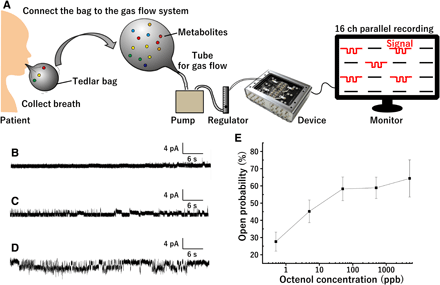
University of Tokyo: Successful odor detection by mosquito olfaction: Detecting signs of liver cancer
University of Tokyo:
Kanagawa Prefectural Institute of Industrial Technology:
The research team of the University of Tokyo and the Kanagawa Prefectural Institute of Industrial Technology announced.
Olfactory receptor built-in sensor:
A sensor made by incorporating “an olfactory receptor that is in the sense of touch of a mosquito and senses human odors”.
The research team succeeded in “detecting a small amount of odor indicating the degree of cancer progression from human breath.”
It was published in the US scientific journal on the 13th.
“Tumor marker” detected by exhalation:
In the future, it will be possible to detect a numerical value “tumor marker” indicating the degree of cancer progression from exhaled breath.
Smell reaction sensor development:
The research team has developed a robot that moves in response to odors using the olfactory receptors of mosquitoes that smell human sweat.
It is a mechanism that creates a circuit through which electric signals flow and makes it a sensor to react.
The research team has developed a “sensor that incorporates a receptor in an artificial cell membrane.”
When sensing odor molecules, the odor and receptors are bound with a high probability.
Detects liver cancer odor:
The research team uses this sensor to measure gas containing “octenol,” which is thought to be a tumor marker that indicates the degree of liver cancer progression.
As a result, we succeeded in detecting a trace amount of odor of 0.5 ppb (a unit indicating how much ppb is per billion).
Isa!
https://www.iza.ne.jp/smp/kiji/life/news/210114/lif21011409100003-s1.html
The University of Tokyo: Breath diagnosis with mosquito odor receptors !?
-Sensor using mosquito olfactory receptor: Successful detection of 0.5 ppb level odor-
2021.01.14
Announcement points:
◆ We have succeeded in sniffing out a small amount of cancer marker of 0.5 ppb mixed with exhaled breath by using an odor sensor that incorporates a mosquito olfactory receptor (Note 1) on an artificial cell membrane.
◆ It was clarified that odor molecules, which are poorly soluble in water, can be efficiently distributed from the air into the aqueous solution by flowing a gas containing odor molecules in the shear direction to the aqueous solution.
◆ We will realize an odor sensor that surpasses conventional technology with sensitivity and molecular recognition ability, and aim to apply it to breath diagnosis, environmental measurement, dangerous substance detection, etc.
–Institute of Industrial Science, University of Tokyo
https://www.iis.u-tokyo.ac.jp/ja/news/3457/
Highly sensitive VOC detectors using insect olfactory receptors reconstituted into lipid bilayers
Science Advances 13 Jan 2021:
Vol. 7, no. 3, eabd2013
DOI: 10.1126/sciadv.abd2013Abstract
This paper reports a volatile organic compound (VOC) sensor based on olfactory receptors
that were reconstituted into a lipid bilayer and used in a specifically designed gas flow system for rapid parts per billion (ppb)–level detection.
This VOC sensor
achieves both rapid detection and high detection probability because of its gas flow system and array design.
Specifically, the gas flow system
includes microchannels and hydrophobic microslits, which facilitate both the introduction of gas into the droplet and droplet mixing.
We installed this system
into a parallel lipid bilayer device and subsequently demonstrated parts per billion–level (0.5 ppb) detection of 1-octen-3-ol in human breath.
Therefore, this system extends the various applications of biological odorant sensing, including breath diagnosis systems and environmental monitoring.
Science Advances